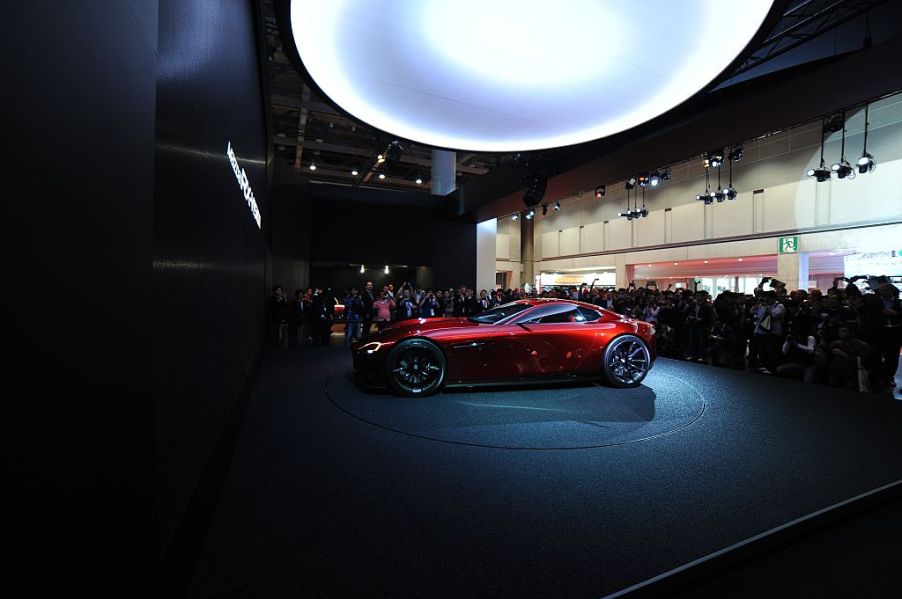
Mazda Embraces Performance With Rotary Engine Announcement
There have been a lot of new developments for Mazda this year. Recently, it teamed up with Toyota to develop more electric cars, gave the CX-5 a new turbocharged engine, and completely revamped the MX-5 Miata with even better performance specs.
The automaker also announced it would re-implement its rotary engine in future vehicles. Mazda developed this engine in the ’60s to enhance performance. But the company stopped using it in 2012 in favor of standard inline-four engines. If you’re not familiar with Mazda, there’s a good chance you’ve never heard of the rotary engine. Here’s what you need to know.
What is a rotary engine?
Also known as a Wankel engine, a rotary engine powers the vehicle like a regular engine but uses a rotor instead of pistons. As the rotor moves, a large vacuum of air is created, which is drawn into the combustion chamber along with the fuel. Then, the two are compressed against the flat side of the engine’s housing. The rotor keeps moving until it accesses the exhaust ports, where the high-pressure exhaust is released.
Because every step in the combustion process happens all at once, the rotary engine has less moving parts than a traditional engine, so it’s less expensive to produce. This also gives the car improved horsepower because the power stroke and intake occur at the same time. Although it’s smaller than regular engines, it can still produce just as much strength.
Unfortunately, the rotary engine has a lot of fuel efficiency issues, including rotor sealing problems and sluggish combustion. It burns more oil than its competitors, which makes it bad for the environment and requires frequent lubrication. These factors made it fail emissions testing, which ultimately led to its discontinuation.
Mazda RX-8’s rotary engine
The last Mazda vehicle to have a rotary engine was the RX-8. While its 1.3-liter engine had a good 232 hp, it fell victim to the subpar fuel economy typical of rotary engines, with a combined 19 MPG. Since the RX-8 was marketed as a sports car, some drivers were also disappointed that the horsepower was not nearly as high as its competitors.
Despite the car’s declining popularity, Mazda’s CEO said he’d find a way to utilize the rotary engine in the future. So far, we know that the rotary engine will be used as a range extender for a future electric car thought be revealed later this year. However, some fans also speculate that the engine will be used in another future car, thanks to hints from Mazda’s President.
Mazda’s shock absorption patent
Mazda recently filed a patent for a future vehicle’s new “shock-absorbing structure.” The diagram for the new engine layout shows a smaller engine bay, which fans speculate is the perfect size for a rotary engine. It also has a double-wishbone front suspension, which was previously used alongside the rotary engine in the RX-8.
Vision Coupe
In 2018, Mazda unveiled a concept car called the Vision Coupe at Car Design Night in Geneva, Switzerland. In addition to having a different body style than previous Mazda cars, it also used the discontinued rotary engine.
The Vision received the Concept Car of the Year award, which could mean potential success for this car when it finally hits the market. If anything, it proves that the popularity of the rotary engine has not faded.



